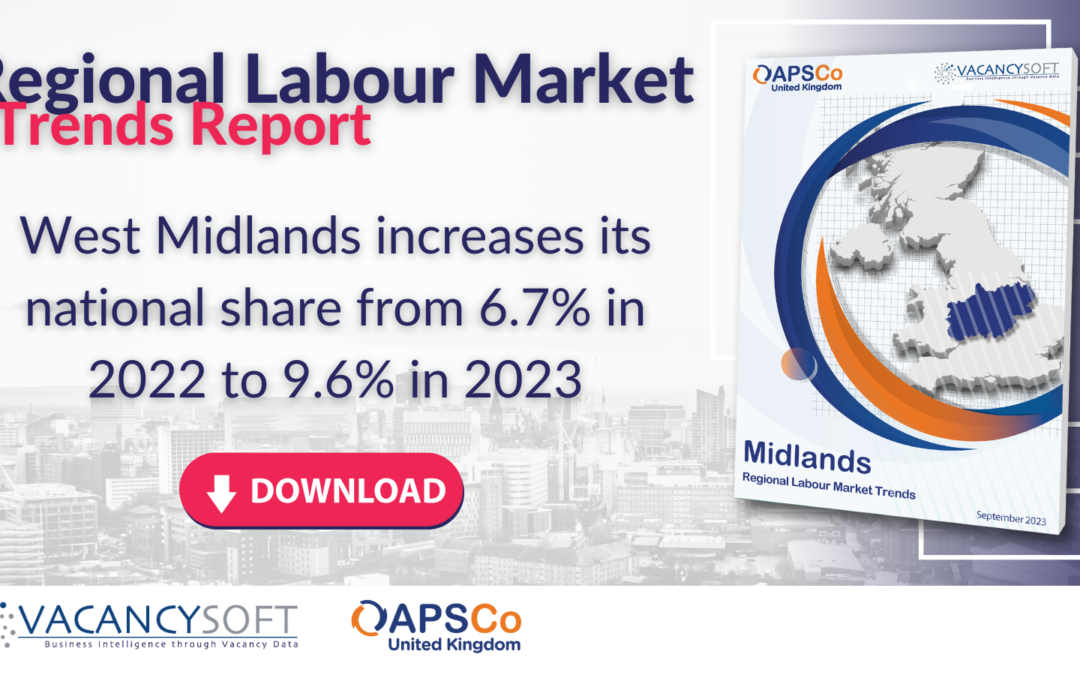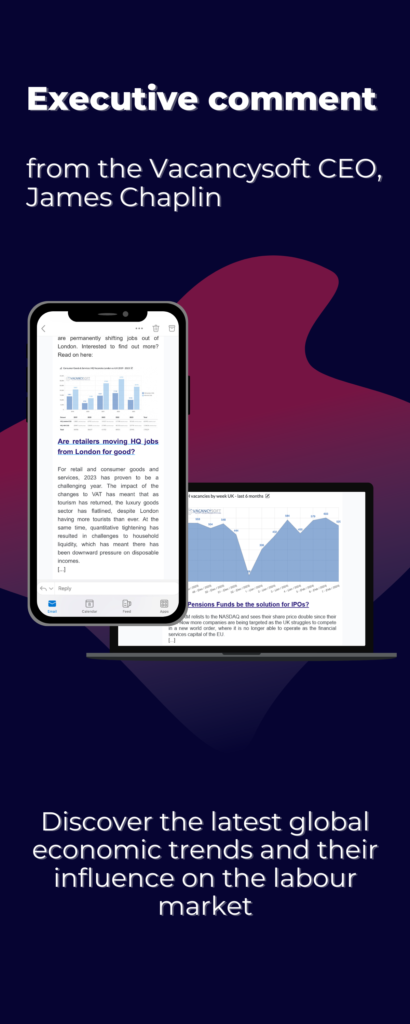
Vacancysoft Market Update: 2021, What Next?
As we approached the end of what has been a frenetic year 2021, with recruiters challenged in unique ways never seen before, the big question was: What next?
In this 20 minute presentation (recorded on Nov 18, 2021) we will give you a snapshot of the latest recruitment trends we are seeing emerging, both by regional area and across the key industries of the knowledge economy so you know how best to organise resources in your business.
James Chaplin, Vacancysoft CEO is presenting, where attendees had the opportunity to both network with each other, using the highly innovative REMO platform, and ask questions about the presentation directly, where after the main presentation, we will have plenty of time to respond to the issues you consider to be most important.
Download our Year in Review Magazine 2021 edition below!
In our annual magazine 2021 edition you will find a full review of the hiring activities across key sectors of the UK economy over the past year. The magazine covers trends seen in Britain’s tech, life sciences, law, finance, real estate and insurance industries.

Gaming – UK Tech Labour Market Trends, October 2023
The slowdown in the technology sector has generally also been felt in gaming, with this year being 55.8% down on last year. Nonetheless, 2023 is 31% up on 2019, showing the underlying trend is upward. As a result, Gaming has hit 5.4% of all vacancies across tech companies, up from 3.5% in 2019 according to the latest UK Technology Labour market trends report by Talent Alpha and market data analysts Vacancysoft.

FTC – UK Life Sciences Labour Market Trends, September 2023
Fixed-Term Contract Scientific vacancies remain relatively stable, maintaining a 5.3% share of all scientific vacancies. Equally, this represents the highest share observed since 2021, suggesting a continued demand for temporary scientific roles, despite a sharp fall in perm vacancies, according to the latest Life Sciences Labour Market Trends report with CPL and Vacancysoft.

Architecture & Design – UK Real Estate Labour Market Trends, September 2023
The Architecture and Design labour market, which reached its zenith in 2022, is now poised for a significant decline in 2023, with an estimated -10.9% decrease in professional vacancies, bringing the total to 3,983 positions. Indeed, the increase in interest rates and the subsequent implications on borrowing costs for developers means that with the cost of capital going up, there has been a slight dip. That combined with the Conservative party scrapping housing targets, has also led to a slowdown in demand, according to the latest UK Real Estate Labour Market Trends report by market data analysts Vacancysoft.

Change Management – Insurance, UK Labour Market Trends, September 2023
According to the 2023 forecast, (Non-IT) Change vacancies are poised for remarkable growth, with a projected increase of 9.2%. As a result, vacancies this year on track to hit record levels, with a forecast of 113 versus 103 last year according to the latest UK Labour Market Trends report by Harrison Holgate and labour market data analysts Vacancysoft.

Ireland Life Sciences Labour Market Trends, August 2023
As the markets have normalised post-pandemic, so the job flow has slowed for scientists. In contrast, engineering vacancies are on the rise, with an estimated 1577 openings in 2023, marking a 6.5% increase from 2022 according to Life Sciences specialist recruiters CPL, and labour market data analysts Vacancysoft.

Midlands – Regional Labour Market Trends, September 2023
The outlook for the Midlands region, encompassing both west and east, is down on last year, with there being a significant decrease of -22.4%. Nonetheless, the West Midlands is poised to increase its share of the national job market from 6.7% in 2022 to 9.6% in 2023. This is according to the latest Regional Trends report with APSCo and Vacancysoft.

Banking & Finance – UK Legal Labour Market Trends, September 2023
Recruitment levels are returning to 2019 levels. However, what has changed is that more vacancies are happening proportionately within the Banks. So for context, in 2019 we saw 381 legal vacancies in banks, in 2023 this is set to be over 500. In contrast, within the law firms, in 2019 we saw 577 banking vacancies, whereas this year we estimate the total to be barely over 400. This is according to the latest UK Legal Labour Market Trends report by Search, and labour market data analysts Vacancysoft.

IT Security – UK Tech Labour Market Trends, September 2023
Despite the fact vacancies have dropped in 2023 versus 2022, we see this as a temporary lull, as the attack vector is bigger than ever before. IT security vacancies are expected to total approximately 4,187 for the year, marking a 30.7% decrease from the 6,045 vacancies observed in 2022. Equally, at the same time, IT security has increased in share of all IT vacancies, from 4.1% last year, to 4.7%, making it one of the fastest-growing segments. This is according to the latest UK Technology Labour Market Trends report by Robert Walters and market data analysts Vacancysoft.

Marketing in Finance – UK Finance Labour Market Trends Report, September 2023
Looking back to 2019, the last pre-pandemic year, we observe a staggering 25% increase in marketing vacancies in 2023, with marketing constituting an 8.7% share of all professional vacancies in the sector, surpassing the 8.2% share observed in 2022. What this means is, not just is there a growth in marketing, but it is growing faster than almost any other area. This is according to the latest UK Finance Labour Market Trends report by Morgan Mckinley and market data analysts Vacancysoft.

Banking – EU Finance Labour Market Trends Report, August 2023
Discover how the European banking sector has shifted post-Brexit and which cities are emerging as winners in the industry. Explore the impact of Macron’s efforts to boost the French banking sector, and other valuable insights to enchance your recruitment.


